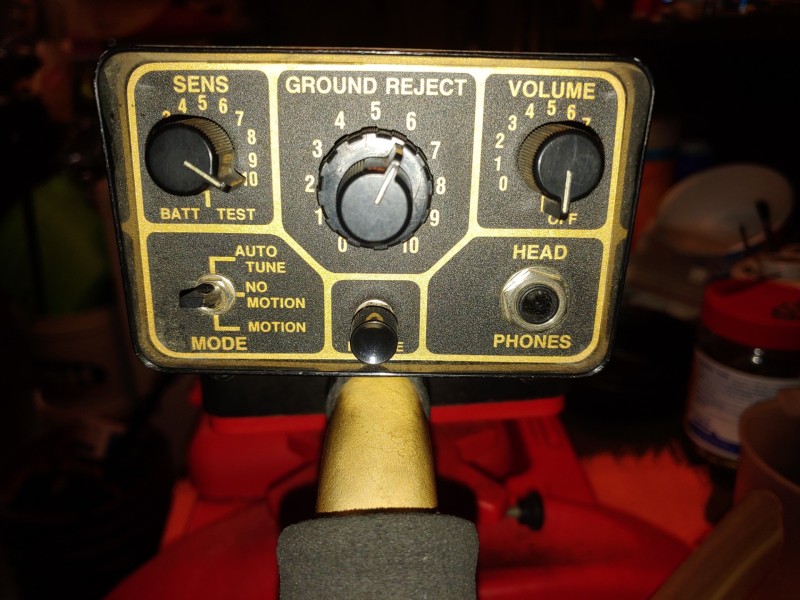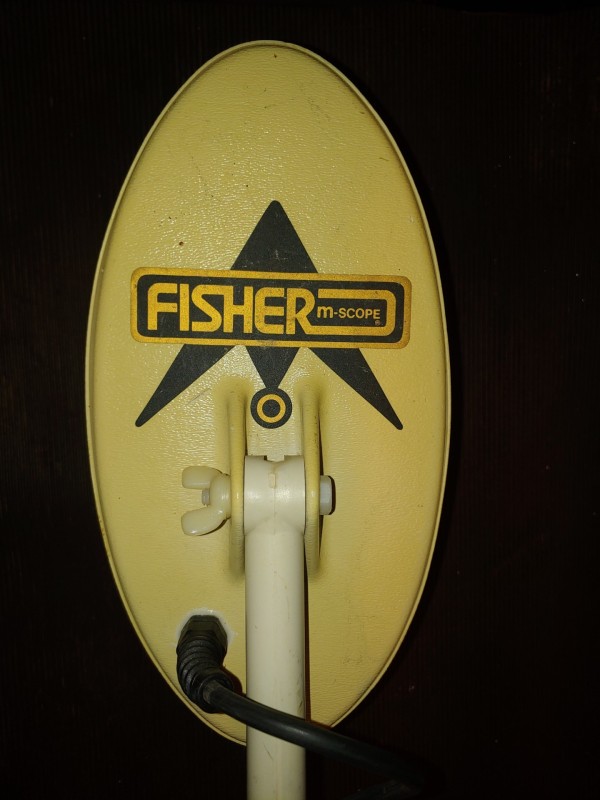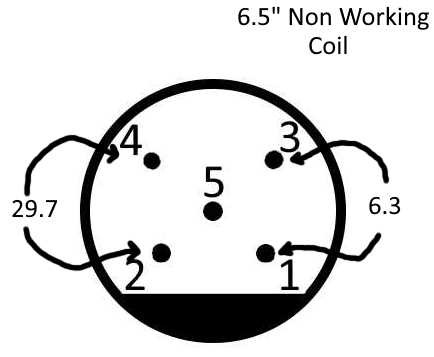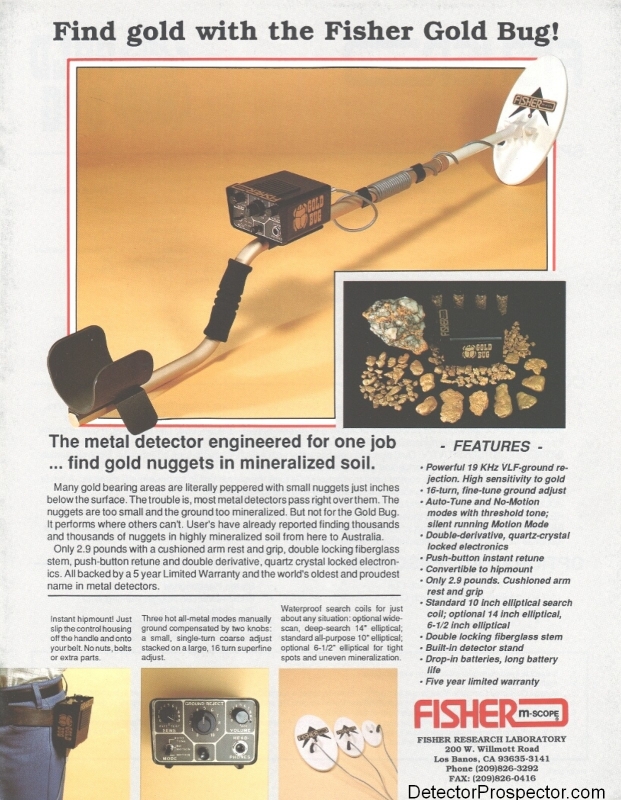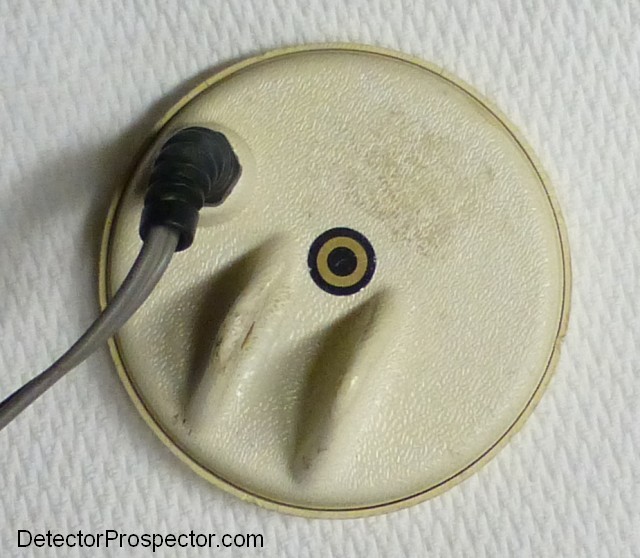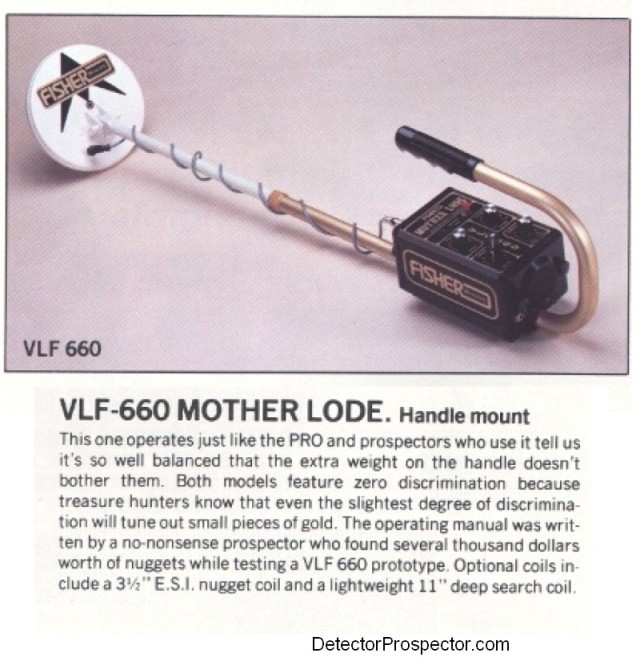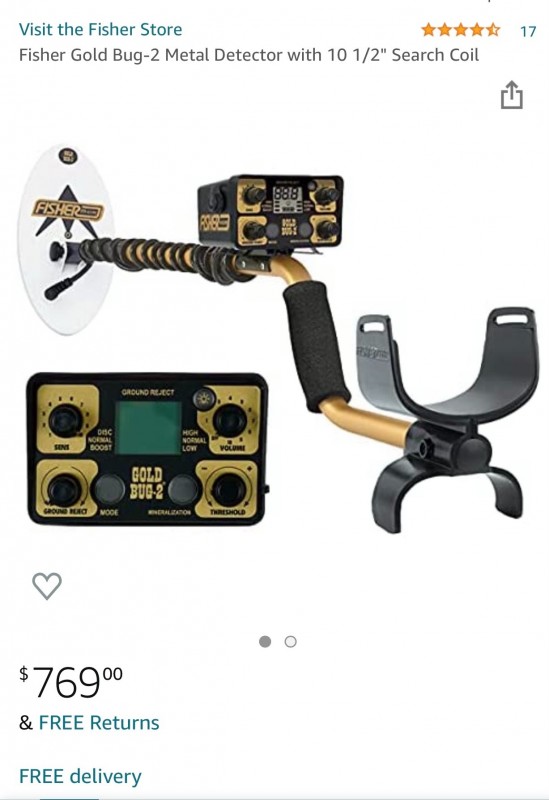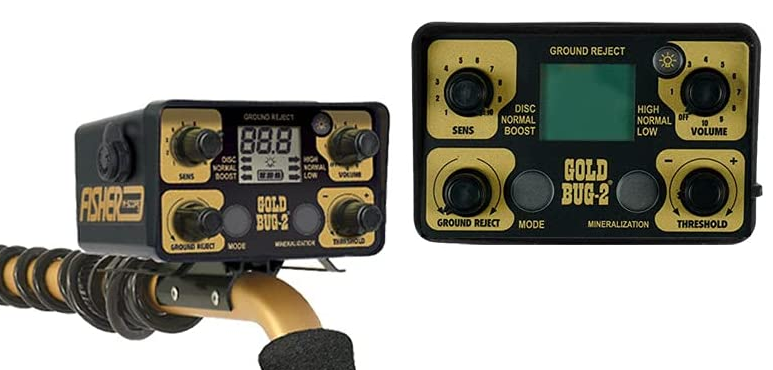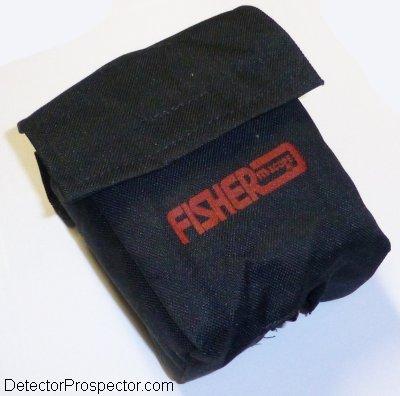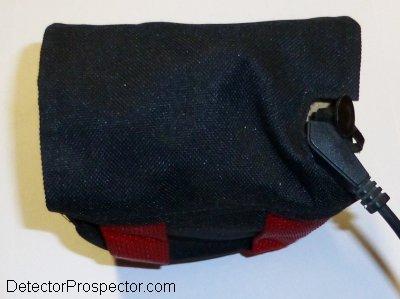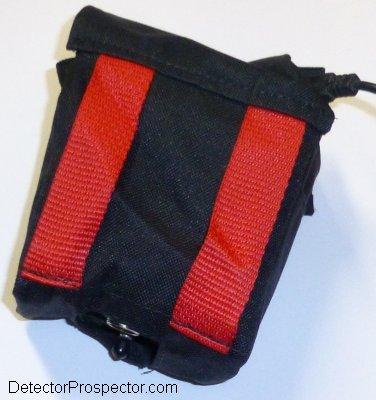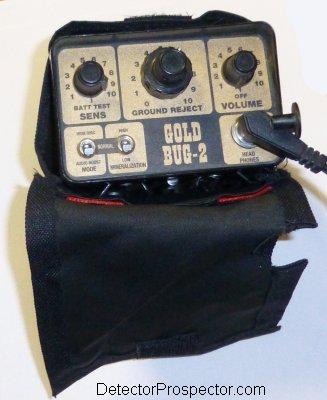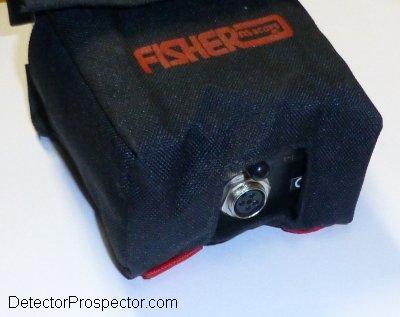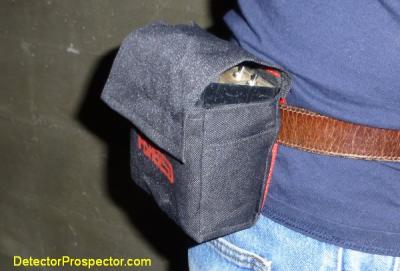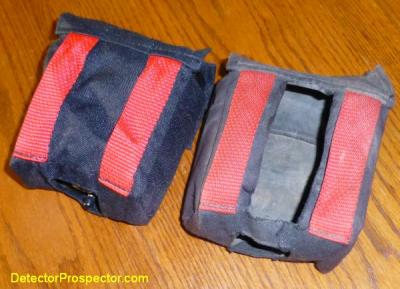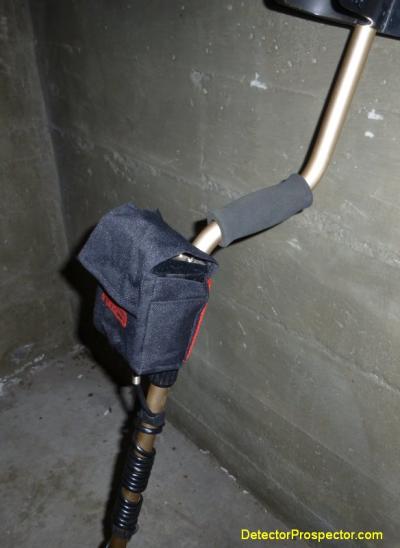Search the Community
Showing results for tags 'fisher gold bug'.
-
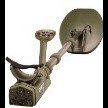
Goldbug 2 5x10 Coil?
Lead Detector posted a topic in First Texas - Bounty Hunter, Fisher & Teknetics
Would like to hear people's experiences with the larger coil on the gb2. I currently just have the 6" coil, and have considered adding the 10" for more coverage in some areas. Is it worth it? -
I've got a goldbug 2 that fades out after running it over a target a few times. It fades in volume and becomes silent, until I power it off and back on again. The stronger the target, the faster it fades. It's currently at fisher waiting for repair. Just curios if anyone else has ever had this problem.
-
With the official announcement on May 15 of the (hopefully) mid-summer release of the Garrett Apex there was considerable discussion of the (only) stock coil planned for release and its affects on depth. Within that discussion Chase gave me incentive to do some testing. This post is a result of that, but since I think my testing is applicable to more than just the Garrett Apex I'm creating this post in the general DetectorProspector forum. The gist of the topic there was how much compromise the 6" (wide) X 11" (tall/high - my choice of word) Apex stock would have on depth. As I mentioned I have quite a few coils for each of my detectors, but subsequently I realized there was one detector (Fisher Gold Bug Pro) and coil combinations (5" DD round and 5" X 10" DD elliptical) which would best address this issue. (I also have some other options -- White's TDI SPP and Minelab X-Terra 705 -- but those are a bit less ideal as will be discussed later. Since I have two other coils for the GB Pro I decided to include those for completeness although they add more variables/concerns and thus don't fit quite as neatly as the other two. I initally started with my variable depth test stand which allows me to vary the depth of small targets in 1/2 inch increments from ~ 1" down to 12" depth in the ground. However, in the midst of that part of the study I realized that I have some (likely iron) trash targets in the field-of-view which compromise the tones/measurements. Fortunately I also have two cleanly placed buried coins -- a copper alloy Lincoln Memorial USA penny buried at 5" depth and a Jefferson nickel alloy 5 cent piece at 6 inch depth. Neither of these currently suffers from nearby trash targets. I subsequently altered my study to use those targets for the coil performance tests. Unfortunately these also aren't ideal since under the conditions of testing they are too shallow to determine in-ground depth limits. What I did as a hybrid compromise is to carefully (i.e. measurably, with shims) raise the coil above the ground until the signal disappeared. For a second (more/less confirmation) test, and one that should be easily repeatable by anyone with the same/similar detector and coils, was to then perform a standard air test. Let's start with the conditions of the tests: 1) Ground conditions -- moist ground (we've had a typical wet Spring season), Fe3O4 mineralization measure of 2.5 bars on both the Fisher Gold Bug and Fisher F75 (2.5 meaning that about half the time I see 2 bars and half the time 3 bars). 2) Gold Bug Pro running in "all metal" ("motion all metal" in USA terminology which I like to call minimally filtered), max gain, threshold at 11 (which is about where Kevin Hoagland calls "mosquito buzzing in your ear"), no headphones (so detector's speaker). 3) My precision for "depth" is 1/2 inch. That coincidentally was the height of the shims I used in the hybrid test and also my ability to control the hand-held coin distance in the air test. 4) My determination of (maximum) depth limit was simple. I increased the depth until I thought I could barely detect an audio signal. I then decreased the target-->detector distance by 1/2 inch and required that I subsequently heard a clear signal. If not I reduced the depth/distance and repeated. Here are the raw data results. I'll explain the meaning of the columns shortly. You can see the four coils I tested. The first three are all Fisher manufactured and the last is the NEL Tornado. Rather than to use the nominal product quoted dimensions ('dim' short for 'dimension' in the column headings) I actually measured the coils and interpolated to account for the fact that a coil doesn't typically have a single extent but rather is a bundle, and further that the bundle obviously fits inside the housing. For the closed coils this is obviously more vague but in those cases I just used half an inch less than the housing dimension. An addition oddity is that DD coils aren't really simple ellipses but some overlap of two independent elliptical coils. 'geom mu' is the geometric mean of the two just determined transverse dimensions -- more specifically the square root of their product. Hopefully you'll see later why I calculated that quantity. It's not really relevant for the main conclusions I draw. The last two columns are the actual distances between the target and coil for the limiting distance (see item 4 above). In the case of the air test that is obvious. In the 'part ground' test that is the sum of the depth of the coin in the ground and the height of the coil above the ground for both coins. At this point I think it's worth discussing some caveats/assumptions/limitations of this test. Then if you've stayed with me I'll go a bit farther and hypothesize on how to use these data to draw conclusions for other coils. 1) Although I chose a detector/coils combination that was as consistent as I could be (same manufacturer and same 'width' coil), it has been discussed on this forum previously (sorry, no link) that the quality control of coil manufacture is a difficult task. It's certainly possible, although not necessarily likely, that my 5" x 10" elliptical coil is a high end tail performer among its peers and/or my 5" round is a low end performer. 2) With any measurement, there are in particular systematic errors and biases. I can't "double blind" my method. That is, I do know which coil I'm testing at a given time and if I have a prejudice for or against a certain coil that could show up in the results. Also, statistical uncertainties (more succinctly, how repeatable are my data) can contribute to errors. It is worth pointing out that swinging the heavy NEL 15" coil effectivly makes taking in-ground measurements with it difficult. As a result I was unable to confidently get a max depth reading for the penny using that coil, which is why that cell is blank. No problem with air tests because there, as is standard (?) I mounted the detector in a stationary horizontal position and just 'swung' the targets to determine the (max) limit distances. Again, it's really the 5" round DD and 5" x 10" elliptical DD that are most relevant. The others are include for information purposes but also to add to the plots I show later. As you can see, in these tests there is a clear and significant advantage for the 5" x 10" elliptical over the 5" round in both the hybrid test and in the air test. OK, I now go a bit deeper. Is there a mathematical relationship which can predict coil depth performance if I know the coil dimensions? Compared to above this is another leap into the unknown with additional uncertainties. However, here are a couple plots which seem to indicate relationships between the potential maximum detectable depth and the geometric mean of the coils width and height dimensions. (Sorry for the confusion but the Blue dots in both plots are for the 1 cent piece and the red dots are for the 5 cent piece.) It's better to look first at the 2nd plot -- air test. There appears to be nearly linear relationship between max depth and the geometric mean of the coil's dimensions, although it appears to trail off with the large (NEL) coil. Superimpose upon that the effects of ground noise and you see a further deterioration both in absolute depth and also in the trend which is shown in the first plot. Simply put, it is well known that mineralized ground, even moderately mineralized as in my back yard, negatively affects attainable depth. The larger the coil, the more ground it "sees", and thus the more ground interferes with performance. I'll finish by pointing out that this isn't the first study I've made. Back 3 years ago when DetectorProspector member Karelian made detailed measurements of a large collection of mono coils on a White's TDI in both ground and air, I noticed the depth vs. geometric mean relationship. However, without a theoretical (physics/engineering) reason to expect this relationship, at this point it's merely a convenient correlation. Karelian's data are further muddied by the fact that the coils studied have many manufacturers: Coiltek, White's, Miner John, Nugget Finder, Minelab,... I could show those results but I think I'll await the reactions to the above. I can also do more tests (e.g. with the X-Terra although there is not clean comparison of round vs. eliptical coils with the same width, at least in my collection) or repeat these. I await your posted reactions (including yawns ?).
-
Has anyone had any experience with the Gold Bug 2 14" elliptical coil? I know most only use the tiny concentric so I was wondering if anyone's even used the bigger coil? What would you consider the benefit to this coil on the Gold Bug 2? Does it provide depth other coils don't? Would it be beneficial to own? I ask as it's now become quite cheap, dealers in the pacific region are virtually clearing it out at heavy discounts so I figured it might be worth snapping up before it's impossible to buy in this part of the world, while I can still get it locally with the associated discounts it's worthwhile but buying it EVER from the USA is just a no-go.... Far far far far far far far too expensive to go that route so If I miss out locally now, I miss out forever as if the dealers are clearing it out it means they don't intend to restock it. If I did buy it my GB2 coil collection would be complete, although I've never even used my 10" elliptical for the Bug, I like that little concentric too much.
-
Hello All, It's fantastic to find your forum to get together and share ideas and information about this fantastic hobby. I been out of it for years and now am getting a chance to get back into it. I had run across a guy that has a Fisher Gold Bug for sale. I had never heard of them but I looked at his detector. It's in pretty decent shape, it's missing a knobs and arm strap but fires right up and does seem to discriminate the different coins. It only has a 5" coil. My questions are, are they a decent detector? Where might I find a replacement knob and arm strap? Also, in regards to the disc, what would be a decent disc to look for to gain more coverage area looking more for coins and such. If you seen a detector such as this on the market, what would you give as a price for this unit? Any help that you can give me would be greatly appreciated. Thank You. Arlin
-
Has anyone on this forum gone about the process of designing their own custom coils to go with some of the more popular detector models on the market? I only have a Gold Bug 2 at the moment and it does alright for what I purchased it for but I was wondering if I might be able to get some more coverage and detection ability out of it when I take it down to the beach I live near to see if the rich people have lost anything. It does just fine out in the desert with the stock 6" coil and I have never felt the need to buy one of the larger coils as I just do not think those would really fit how I most use the detector out in the desert. Anyway I obviously am considering trying to build a couple different sizes and geometry coils to use with my GB2 but also would love to hear about what other people have done with other detectors. Would love to get a little more guidance than my sorta basic electronics knowledge, intuition, and searching the web.
-
Does anyone know if it is possible the change-out the quartz crystal on the Goldbug 1?
-
Hey guys, I have been using my Gold Bug 2 out in Franconia, Arizona, mainly for hunting meteorites. I have found a few small pieces there and am really enjoying this machine, as it is extremely sensitive and screams when it goes over a chondrite. With that being said, I am still a beginner with this machine and would like to ask for advice when dealing with hot ground and hot rocks. There are tons of hot basalt rocks, ironstones, and other hot rocks at Franconia, which makes for very noisy hunts. It gets frustrating as I start out because my machine seems to pick up everything and it's tough to differentiate what the sounds are sometimes. Do you guys have any tips or suggestions for the best settings to use for this machine, and what coil size is best? I am currently using the 10" coil, I feel like this gives me some more coverage than the 6.5." The settings I use when at Franconia are as follows: -Sensitivity and volume: 10 -I ground balance the machine every hour or so as I am hunting, pretty easy to do on this machine. -I don't use the iron disc mode or the audio boost. The meteorites I am looking for contain a lot of nickel and iron so I'm not sure if these settings would help me or hurt me. -I keep the default setting for mineralization. I have gotten better with detecting and have heard great reviews of this machine. It is noisy on hot ground, but when I do swing over a meteorite, or even trash, foil, bullets, wire, it screams. Would like to hear what y'all would suggest and some settings that could be modified for using in hot ground. -A.J.
-
Steve H has talked about the value of VLF machines many times, but here's my own new experience. I was bored during the holidays with time on my hands for detecting, alas my GPX is still at the Minelab detector Doctor. I decided to take Steve's sage wisdom to heart and give the Gold Bug 2 and 6.5" coil a proper go. I bought the GB2 from Steve at AMDS last year and had it out a couple times, a few crumbs here and there. I just never took the time to really get to know the detector. I know a weathered little valley down Yuma way, where the oldtimers drywashed the hell out of every wash and gulley. A couple years ago I pulled a sub-gram nugget off the slope with no more than 6 inches of dirt and gravel to host rock. I figured that would be prime ground for the GB. I planned an overnighter so that I could get the most out of detecting time, only to discover I had forgotten my headphones. Oh well, the GB has an external speaker, not ideal situation but tolerable. I rigged a neck strap for the control box to that the speaker was closer to my ears. That setup was fantastic, I would highly recommend it even with headphones. You can wave that wand with the little coil all day without any arm fatigue. I found my old dig hole and started beeping. Within minutes found gold and some decent pieces. Over the next 2 days I found 38 pieces in a band about 20 ft wide and maybe 100 ft long. I stood on the hill and looked at my gravel scrapes and the band was plain as day. There were a few oldtimer exploration holes nearby, all into a seam of red looking ore. I checked their tailings, lousy with iron trash from blasting caps and such. The photo shows the gold divided into categories. The biggest are in the .5 to .7 grams. The next size is 2 to 4 grains. The next size are sub-grain, 12 of them weighed 4 grains. The last ones with a ballpoint pen for scale are so tiny the whole lot won't register on my scale. What I learned. The GB2 is a fantastic machine in the right circumstances. In moderate ground it really has to move way way slow. The threshold autotune really needs time to catch up going over mineralized ground or you're going to hear far too many beeps, geeps and groans. Slow that bad boy down. The Maxed Out settings are the ticket to hear those little bitty ones. Iron discriminate will probably lose you gold. It would be a difficult machine to actually search for new spots. The coil coverage is so small and you have to move way too slow. It's suited for ground where you already know there is gold and can concentrate on low and slow. Like most of you, I enjoy the hunt. Sure, I wish all those nuggets were all in plus gram size, but I had a great time chasing those crumbs. Bravo Zulu to Steve H. for sharing his wisdom and knowledge for all things prospecting.
-
The mod I did like on the Gold Bug 2 was Gary Hudson's sensitivity modification, unfortunately though I lost contact with Gary years ago and this modified one needs fixed. I do not have the paper work either or I would try to fix it. Gerry McMullen had one when we went detecting together about 20 years ago and he did really good with it, so I finally broke down and got one. Anyone remember what all the switches did?
-
I won an Original Fisher Gold Bug in a Club raffle last Saturday. I bought $90 worth of tickets at 6 for $5. Although the winner came from a batch from a previous meeting! I could have saved $40. I tested it out and it seems to work fine. I’m more familiar with the GB2. It came with the White’s Koss E-9000 headphones but there’s only sound on one side. I need a set with a compatibility switch to hear in both. Back in the day both Fisher and Garrett were mono (one black stripe on the plug), but the sound came out on both sides. Stereo (two stripes) will only work on one side without the switch. It came with the original box too! Thank you, Steve, for having the Owner’s Manual available for download as well as other Information! Walt
-
I got a new GB2, 6 inch coil off ebay but it will not fit the GB2 I have. The coil ears are barely 1/16 inch thick and too narrow space between them looks like.My GB2 is one I got from Steve H, a while back. The coil ears on my 10 inch coil are quite thick by comparison. So, did I get ripped off or what happened? If I use brute force to make the ears fit the pole, it will break for sure looks like. -Tom V.
-
Can someone with a working GB2 or the original GB 6.5" coil check with a meter what resistance you get between what pins. I received what looks to be now or very slightly used 6.5 inch coil, problem is I get no response to metal/gold with it. I checked my working 10" coil and a new (seems to be working) 14" coil and they share the same pinout and similar resistances. I'm using cheap cables and my meter only has one decimal resolution so lets say +/- 0.1k resistance. Edit 2: Not a GB2 coil. Real GB2 coil has similar resistance and same pinout as the 10 and 14inch coil. Any one want to purchase a 6.5" coil for an unknown machine? It's brand spanking new. I would guess it's a gb or gb pro or a gb clone coil. Edit 1: I'm starting to think it's a coil for the original Gold Bug that was purposely or accidentally mislabeled. Anyone with the original gold bug coil care to test their coil for me? 6.5" coil <not working> 1-3 = 6.3 ohm 2-4 = 29.7 ohm Nothing grounded 10" coil 2-3 = 2.2 ohm 4-5 = 18.7 ohm 3-Grounded 14" coil 2-3 = 2.5 ohm 4-5 = 18.0 ohm 3-Grounded
-
I have a 1990s era Fisher Gold Bug, the original 19 kHz analog version, long since replaced by newer models. The old 19 kHz model was not particularly hot, but it did have an ability to ground balance out some hot rocks that newer and hotter VLF machines struggle with. Original Fisher Gold Bug Data & Reviews The detector came with a 10" elliptical search coil. I have a couple very rare 3.5" round coils that Fisher made for these models before the little 4" x 6" elliptical replaced it. It's the smallest search coil I've ever owned for a commercially sold metal detector, making the unit into more of a probe than a normal detector. The threshold was cutting out if the detector was bumped, something loose, so it's been sitting idle for a very long time. I decided it was doing no good as is, and by chance had an opportunity to call Felix at Fisher recently. Felix is another old-timer in the industry like myself, who I have not talked to since I left my old dealership in Alaska over eight years ago. Anyway, since the detector is still actually functional Felix figured they could give it a good refurbish and fix whatever is loose. The main thing I wanted, however, was to get the detector tuned for the 3.5" coil. Most people do not know it, but analog Gold Bugs are hand tuned for every coil. The coil they ship with is tuned for the detector, or should I say the detector is tuned for the coil. Accessory coils may or may not be a perfect match if the original coil is swapped out for something else. Long story short is I am asking them to match the detector to the 3.5" coil as well as is possible. The original Gold Bug is a genuine classic. Prior to it, detectors were large square boxes with extremely poor ergonomics. The Bug features a very compact control box that is removeable from a S rod, enabling easy chest or hip mounting. The design seems normal now, but you have to have used what came before to see the genius of what Fisher did with the Gold Bug. 19 kHz was also a radically high frequency at the time, as people were just catching on to the idea that higher frequencies are better for small gold nuggets than the lower frequencies that were the norm of the time. The 19 kHz Gold Bug replaced the 4.5 kHz VLF-660 Mother Lode as Fishers top nugget detector. Frankly, Fisher was not seriously in the game prior to this point, with Garrett probably the leader in VLF gold detectors at the time. A new company named Minelab was just starting to sell detectors in Australia, and had yet to really make a name for themselves. Anyway, control box and coil boxed up and on the way to El Paso. I'll let you all know how long it takes and what the result is. Here is a picture of one of the coils. The Gold Bug coils first used a gray dual lead cable, which was replaced very early on with the stouter black cable used to this day. This is the older coil of the two, though it also has less wear. The one I sent in has the heavier cable but is in poor condition. I need to reinforce the coil ears when I get it back since one is cracking. But I decided I wanted to use the coil with the heavier cable, with this older one serving as backup until I sort this all out. And in case anyone is wondering, the old 19 kHz coils do not work on the newer digital versions of the 19 kHz Gold Bug. 3.5" round search coil for original analog Gold Bug To reiterate what a radical design advance the Gold Bug was at the time, here is a picture of the detector it replaced, the 4.5 kHz Mother Lode... Fisher VLF-660 Mother Lode metal detector And the new 19 kHz Gold Bug...
-
Hello to all, I am currently using a goldbug 2. On the creek in the Yuba River drainage where I am using it, there is a lot of exposed bedrock, or alternating gravel and bedrock. I am finding that the bedrock ground balances far different from the gravels. This is a bit of a problem for me, since when I ground balance to the bedrock, any of the gravel sounds off loudly. When I ground balance to the gravels, then pass the coil over bedrock, the detector goes null, or quiet. Seems this contrast is giving me a lot of false positive reads. I have found a fair amount of flakes and small pickers, but feel that I may be missing good targets, since the bedrock and gravels ground balance so so differently. Any suggestions on how to deal with this would be much appreciated. Jeffree
-
Is it me or does it seem like the cable for the GB2 is about twice as long as it needs to be? I guess I understand that you are supposed to be able to mount the control box to yourself. Has anyone shortened theirs? Would this cause any issues with the detector?
-
Picked up my GM1000 from Gerry on Friday, then after doing chores up at the cabin got it out yesterday and today. Used the larger coil for scouting out a new spot and after a couple hours of no decent targets yesterday, went over the same area with my GB2. Still nothing, so at least I didn't miss anything in that area, but I wasn't real comfortable with the Monster yet. So today, after yacking with VA Nurse Paul last night and Scott T today...both singing its praises, I put the small coil on it and went to my "old reliable" bench to see if I could squeak out another baby nugget. Moved rocks and dug up some sagebrush....initially hunting with trusty GB2 to get a target, then compare it with the Monster. Wow, it could hear the Fly-poo AU I find up there, and the disc was pretty reliable! I found 3 pieces using the GB2 first, then once I was more comfortable with how the Monster responds, it sniffed out 6 more! I noticed on some "iffy" signals that the Goldbug heard, the Monster picked them up a bit better. I was using manual 10 sensitivity and All Metal/deep, and as others have mentioned, it does false if you hit a rock etc. Not using headphones and having no threshold hum was actually nice for a change too. Pretty cool machine....tomorrow I'm going to hit the hard rock gravels and see how it does. :-)
-
I've had a Gold Bug for 5 or 6 months now. Intermittently when I press the "+" button to increase discrimination it switches into pinpoint mode, will stay there until I release the button and re-press and will then work fine (usually). I've ensured my fat little finger is no where near the pin point button. Been telling myself its likely just some software glitch, annoying, but I can live with it vs. sending it in for repair. Part of me says "get it fixed before the warranty expires stupid". Well cooler weather is here and I will be sending it in. Just curious if any of you have had the same problem?
-
Although I’m not a prospector and haven’t used a gold machine, I did find this interesting that the Gold Bug 2 has received a digital target ID makeover. Here’s a photo from Amazon. There’s also an official ad from Fisher that I lost track of when the site was down. I’m now wondering if maybe the CZ-3D will get the same.
-
As a lot of people don't bother checking out the First Texas thread these days as very little happens there I figured I'd post this here too, they finally upgraded the Gold Bug 2, with a small facelift to bring it up to the late 1990's ? Nothing performance wise seems to be changed but it has a screen now! You can see the original post by Cipher here I also put a Youtube video on that thread where a guy tests it against various detectors including the GM1000 and GPX 6000. He tests it against his Nox but has it setup incorrectly for nugget detecting so ignore that segment of his video ?
-
Under "meet and Greet" ,my first posting, I had mentioned I am needing to get a new detector as my ol'Garrett had died (but I have since fixed,yeah!). Was torn between the Equinox 540, looks like a pretty nice machine but as I have an original Gold Bug and know what it can do I sure wanted the new Gold Bug DP but the price is a bit painful for my budget ( unemployed). Well my new GB arrived yesterday! Took it out for a quickie last night just to get acquainted with it, to a sand pit, sure wouldn't expect much old goodies as the topsoil was ripped off years ago to mine sand. Been abandoned for a while now though, kids partying, stolen cars getting burnt, target practice, etc but hey...stuff gets lost everywhere...'ya never know. Wasnt there 5 minutes and got a big heavy gold ear ring! Whoo-Hoo! Few minutes later, silver ear ring! Looks gold-ish in the picture but in real life silver colored. Well excitement wore off after looking at it under an eye loupe, plated junk and slightly magnetic but gold just the same. Also found an electrical connector with gold pins and 3 copper pennies.
-
My Fisher Gold Bug 2 is more like a mining tool than a metal detector. As such it gets subjected to a lot of potential abuse. In particular, I like to sit it upside down, control box on the ground, while I wave my scoop over the bottom of the coil looking for a tiny nugget. I have some money invested in this tool however and I want to take care of it. So I use a little known Fisher secret - the holster / control box cover for the Gold Bug 2. As you may or may not know the Fisher Gold Bug 2 is designed to be taken off the rod assembly, and by way of built in slots put on a belt and hip mounted. This is great for making the rod assembly super light for overhead use, like working a cut bank or steep tailing piles. It also puts the control box under your rain coat for protection. Note that bending over with the box on front of your hip continually bends the coil cable where it attaches to the box and will lead to premature cable failure. I therefore recommend mounting the box on your rear hip as shown. This is over my shirt for the photo, normally my belt would be holding my pants up also! Fisher Gold Bug 2 Belt Slots Fisher Gold Bug 2 Hip Mounted The holster of control box cover for the Gold Bug 2 is made of heavy waterproof cordura nylon with belt loops and a flip cover with velcro closure. It has a hole on the bottom to attach the coil cable and access the threshold control. The top cover has a notch for the headphone jack. The cover is originally designed as a hip mount holster option, using the loops incorporated into the holster instead of those on the control box itself. I wanted to use my control box cover, not for hip mounting, but while rod mounted. Here is a new cover next to my old cover with the slot I cut to allow the box to rod mount with the cover on. Just used scissors, never had an issue with tearing later. The final result - a fully protected Gold Bug 2 control box ready to lay in the dirt. The cover has a tiny pocket on each side but I have never used them. The top flips open easily for a quick control adjustment if needed or can be tucked in and left open if desired. This cover was made for years for the original Gold Bug and Gold Bug 2 and also fits the old 1225X and 1235X models. It was discontinued for several years and then made available again. Last MSRP I saw was $18.95 and part number 103696. Most Fisher dealers probably do not even know this exists so you may have to look around to actually find one in stock someplace. One of those hand made things that probably will be discontinued sometime so I got the second one just to have two.
-
I will be retiring in the coming months and am preparing to get back into prospecting. My plan is to go "high tech". My view is that I may want a VLF to search for small targets then switch to a PI to punch down deeper for any other potential targets over the same area. I'm leaning strongly toward the Gold Bug 2 for my first detector. I understand after doing some research and watching a bunch of videos on YouTube that the GB2 really excels at recovering small gold. My question is, considering it's operating frequency, what kind of depth is possible with the GB2 and considering ground mineralization?
-
Although we own Minelabs-Equinox, GP's & other detectors, more and more often my brother Jim and I are using the Gold Bug 2. We've discovered that when we find a patch and after the small nuggets are found, tiny pieces still remain. At the end stage, we can get even more pieces by raking the area. Jim made me this collapsible rake, from a tiny collapsible four tine rake and a welded-on eight tine piece. I can carry it in my backpack and it looks like just the tool for those tiny pieces.


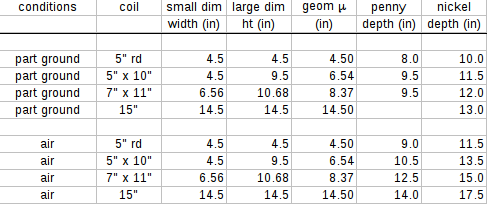
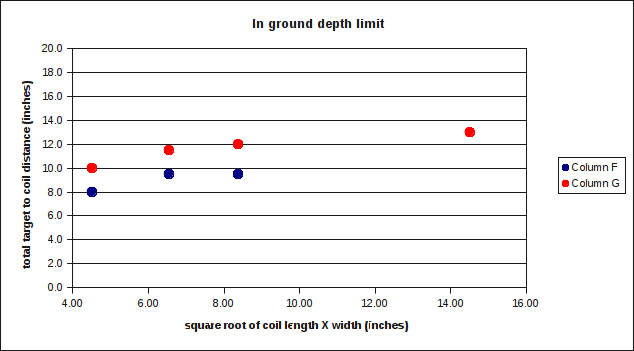
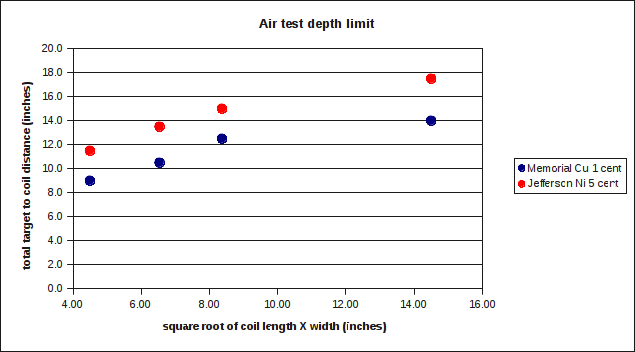

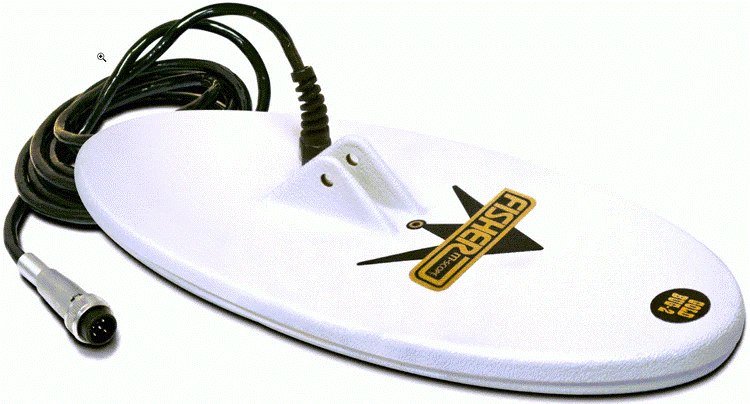
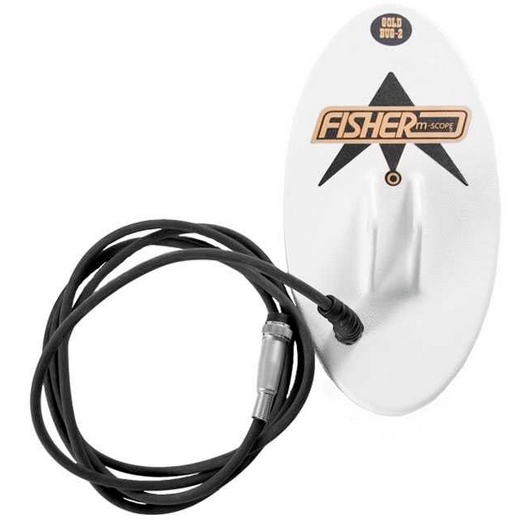

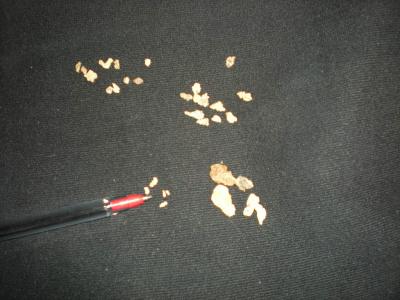
.thumb.jpeg.4e429bd0f2065464590808d8efa2ce6e.jpeg)

